Most downloaded
- Page Path
-
- HOME
- BROWSE ARTICLES
- Most downloaded
"Most downloaded" Articles are from the articles published in 2022 during the last six months.
- Review Article
- Neurobehavior
- Psychological aspects in children and parents of children with chronic kidney disease and their families (16 times)
- Alemsungla Aier, Priya Pais, Vijaya Raman
- Clin Exp Pediatr. 2022;65(5):222-229. Published online November 10, 2021
-
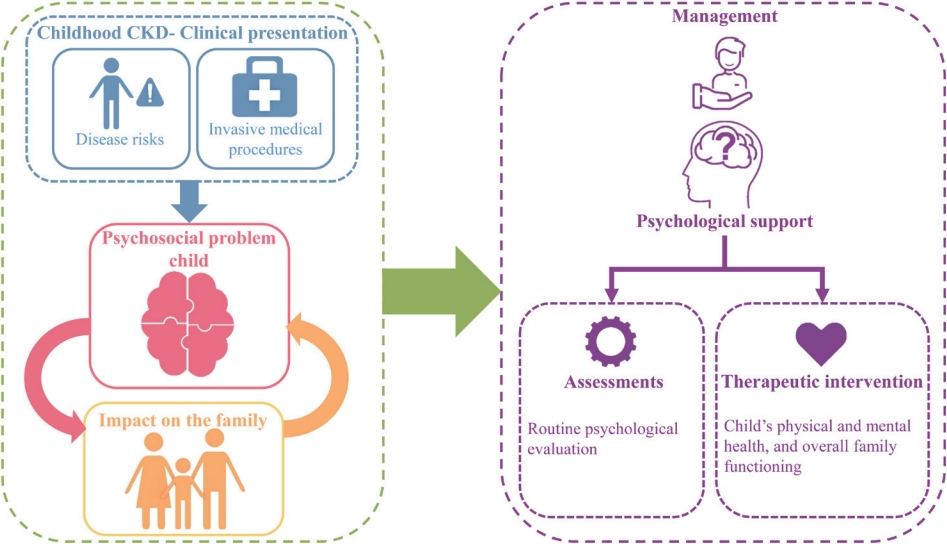
· Childhood chronic kidney disease (CKD) is complex and requires lifetime medical treatment.
· Children with CKD are at risk for emotional, behavioral, social, and academic difficulties that significantly affect their quality of life.
· Caring for children with CKD is stressful for families.
· These unique challenges are crucial and can negatively impact treatment outcomes.
· Awareness of and addressing these evolving psychosocial issues can foster their developing needs.
- Letter to the Editor
- Developmental and Behavioral Medicine
- The influence of parental eating behaviors, child-feeding practices, and infants’ temperaments upon infants’ eating behaviors (16 times)
- Goh Woon Lim, Kyoung Min Shin
- Clin Exp Pediatr. 2022;65(9):466-468. Published online June 27, 2022
-
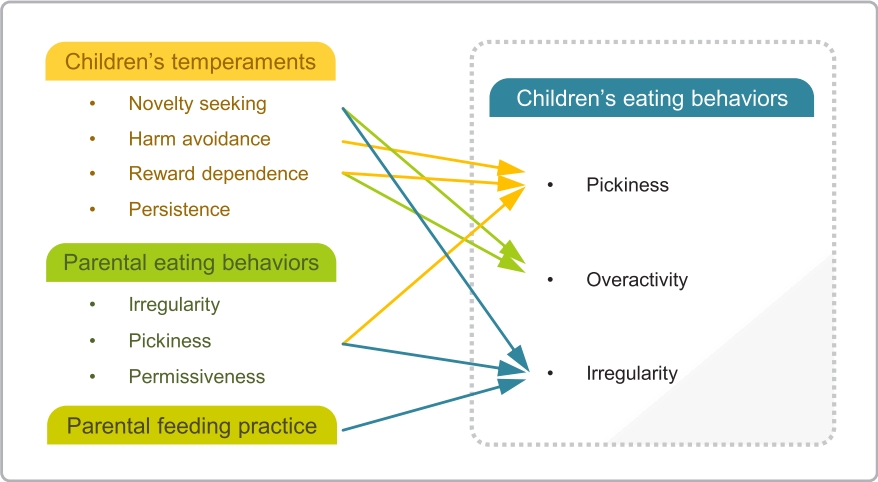
- Review Article
- Cardiology
- Environmental changes surrounding congenital heart disease (16 times)
- Eun-Young Choi
- Clin Exp Pediatr. 2023;66(8):332-338. Published online January 2, 2023
-
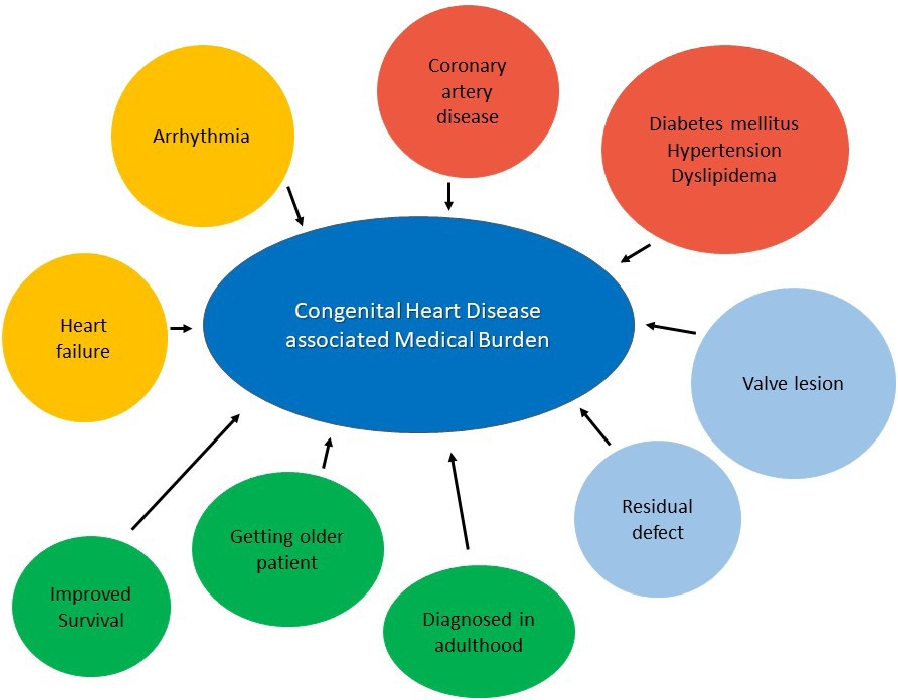
· As the number of patients with congenital heart disease increases, the medical burden increases.
· Various fusion imaging techniques using percutaneous procedures have been introduced.
· With advances in technology, convenient ambulatory devices have been introduced.
· A well-organized team approach is required to resolve advanced heart failure in patients with congenital heart disease.
- Original Article
- Developmental and Behavioral Medicine
- Parenting stress and interactive engagement behaviors in children with developmental delay (16 times)
- Jung Sook Yeom, Rock Bum Kim, Jae Young Cho, Ji Sook Park, Eun Sil Park, Ji-Hyun Seo, Jae-Young Lim, Hyang-Ok Woo
- Clin Exp Pediatr. 2023;66(6):252-261. Published online May 19, 2023
-
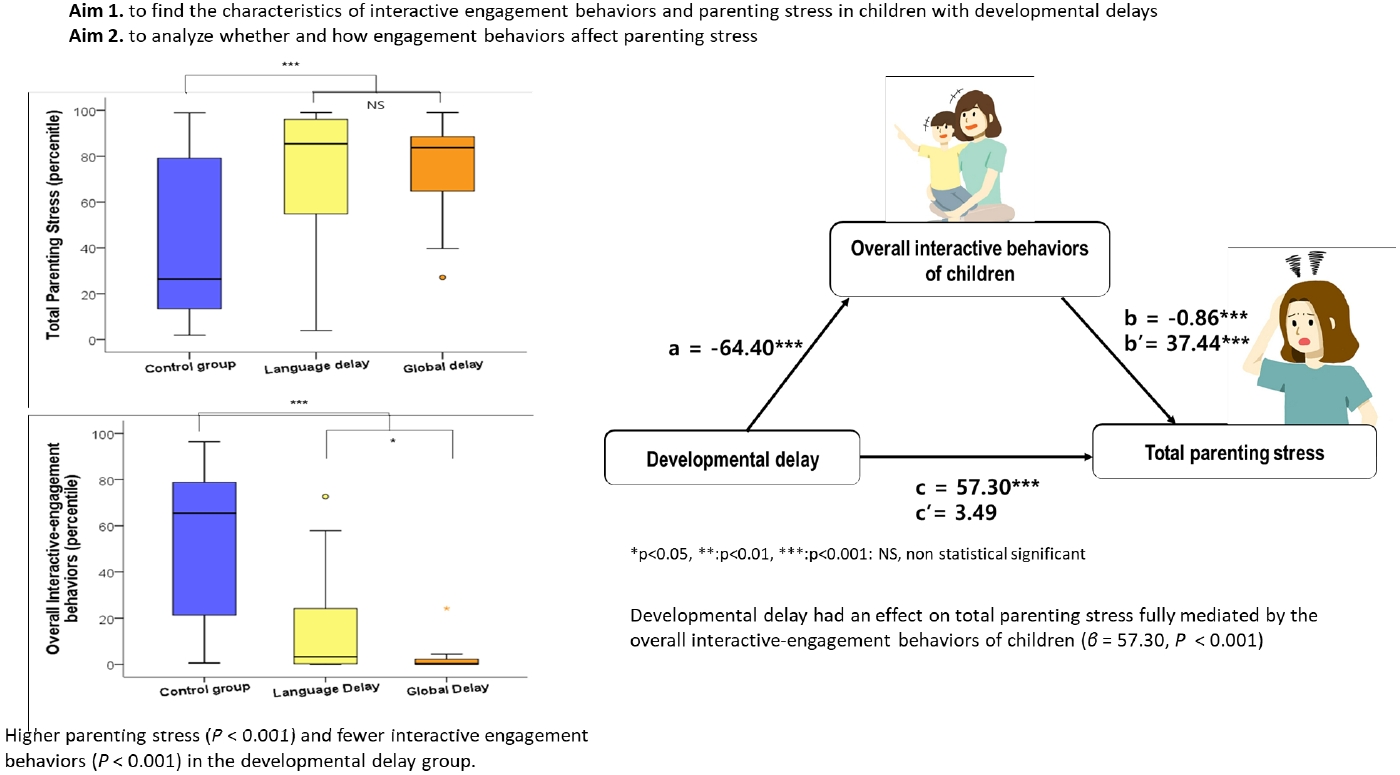
· Question: What level of parenting stress is experienced by parents of children with developmental delays (DDs) without autism spectrum disorder, and what factors contribute to it?
· Findings: Parents of children with DDs experienced high parenting stress that were significantly mediated by their children’s low interactive behaviors.
· Meaning: The interactive behaviors of children with DDs mediate parenting stress.
- Neonatology (Perinatology)
- Association between maternal coronavirus disease 2019 and transient tachypnea of the newborn: a single-center study (16 times)
- Sung Hee Lee, Ju Hyun Jin, Jong Ha Yoo, Shin Won Yoon
- Clin Exp Pediatr. 2023;66(11):493-500. Published online October 24, 2023
-
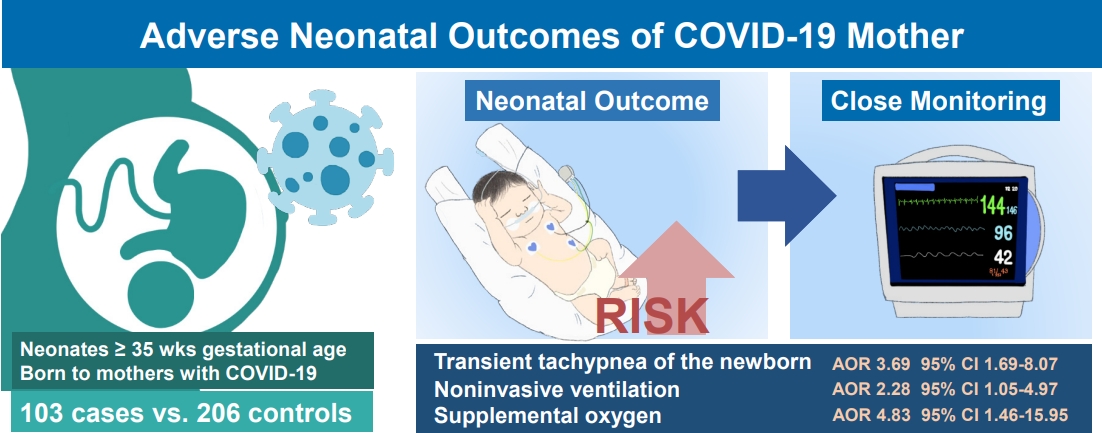
Question: What are the adverse clinical outcomes of neonates of coronavirus disease 2019 (COVID-19)–infected mothers?
Finding: Infants of mothers with COVID-19 were at significantly increased risk of transient tachypnea of the newborn (TTN), use of noninvasive ventilation, and need for supplemental oxygen (P<0.05).
Meaning: Neonates of mothers with COVID-19 are at risk of TTN and require respiratory support. Close monitoring is essential to ensuring timely intervention if required.
- Neonatal sepsis-causing bacterial pathogens and outcome of trends of their antimicrobial susceptibility a 20-year period at a neonatal intensive care unit (15 times)
- Woo Sun Song, Hye Won Park, Moon Youn Oh, Jae Young Jo, Chae Young Kim, Jung Ju Lee, Euiseok Jung, Byong Sop Lee, Ki-Soo Kim, Ellen Ai-Rhan Kim
- Clin Exp Pediatr. 2022;65(7):350-357. Published online December 9, 2021
-
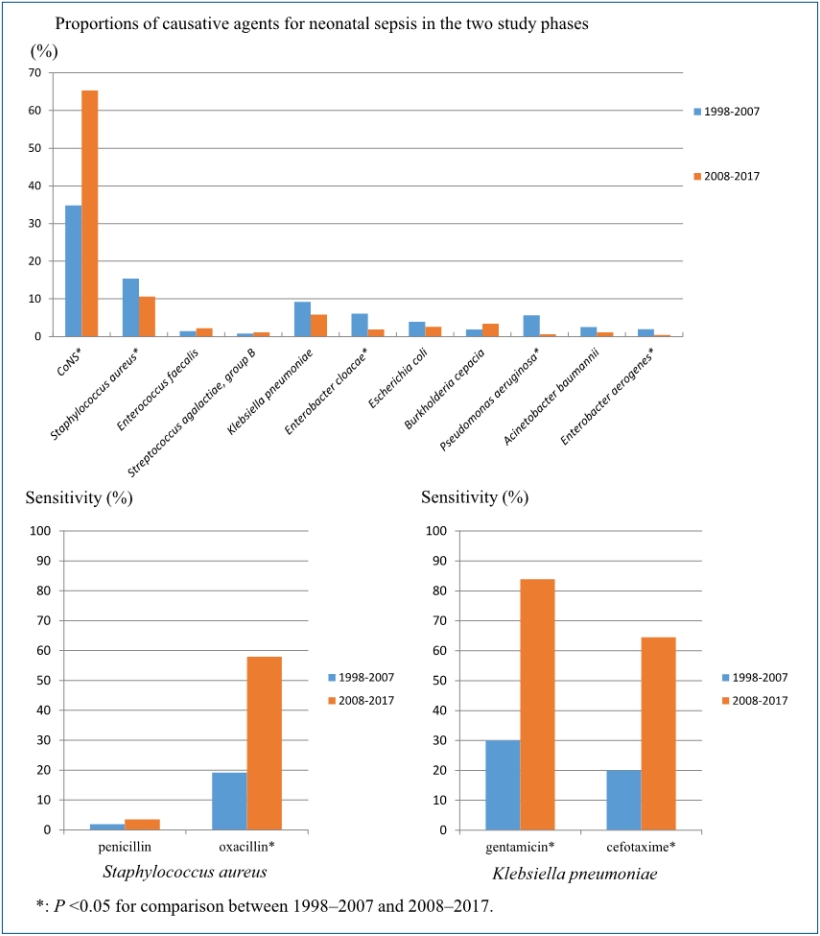
Question: What is prevalence of bacterial pathogens causing sepsis and their antimicrobial susceptibility over 20 years?
Finding: Coagulase-negative remains most common causative organism. The most common gram-negative organism was Klebsiella pneumonia. The susceptibility of staphylococcus aureus and K. pneumonia showed increased susceptability to oxacillin, cefotaxime and amikacin, gentamicin, respectively.
Meaning: Answers to the question asked is important in choosing antimicrobials and to monitor emergence of multidrug-resistant organisms.
- Review Article
- Other
- Epidemiology of pediatric fractures before versus during the coronavirus disease 2019 pandemic (15 times)
- Chi Hoon Oh, Siyeong Yoon, Kyung Rae Ko, Young Woo Kwon, Kyeong Mi Kim, Hyun Seo Park, Hogyeong Kang, Inseok Jang, Soonchul Lee
- Clin Exp Pediatr. 2022;65(7):330-336. Published online June 3, 2022
-

∙ The novel coronavirus disease 2019 (COVID-19) was first reported in December 2019 as a cluster outbreak in Wuhan, since then, national lockdowns have included school closures, stay-at-home orders.
∙ The characteristics of adolescent fractures were often related to physical activity such as sports-related injury.
∙ During the COVID-19 pandemic, both in the East and the West, the incidence of fractures in children and adolescents is showing a decreasing trend worldwide.
∙ Fractures in children and adolescents were significantly reduced in the proportion of relatively low-energy damage, and the incidence of fractures in adolescents with greater activity compared to children was reduced.
∙ If COVID-19 pandemic ends, normal academic and sports activities increase due to the easing of lockdown policies, the number of trauma patients related to increased activity may increase rapidly, and clinics should prepare for this change.
- Original Article
- General Pediatrics
- Effect of 2–6 weeks of systemic steroids on bone mineral density in children (14 times)
- Athira Kuniyil, Somdipa Pal, Namrita Sachdev, Tribhuvan Pal Yadav
- Clin Exp Pediatr. 2022;65(5):254-261. Published online November 18, 2021
-

Question: Does steroid use for 2–6 weeks in children affect bone mineral content (BMC) or density (BMD)?
Finding: Steroid use for 2–6 weeks significantly decreased BMC and BMD of the whole body, total body less the head, lumbar spine, and distal radius. A significant negative correlation was observed among BMD, duration, and cumulative dose.
Meaning: Steroid use for 2–6 weeks in children negatively affected BMC and BMD.
- Review Article
- Cardiology
- Implication of microRNA as a potential biomarker of myocarditis (14 times)
- Jin-Hee Oh, Gi Beom Kim, Heeyoung Seok
- Clin Exp Pediatr. 2022;65(5):230-238. Published online March 2, 2022
-

· Myocarditis was recently examined quantitatively as inflammation of the heart muscle based on endomyocardial biopsy, and its noninvasive diagnosis remains unsatisfactory.
· Additionally, numerous miRNAs (miR-155, miR-146b, miR-590, miR-221, miR-222, etc.) coupled with inflammation or viral activation have been examined in myocarditis patients or mouse models.
· The recent identification of mmu-miR-721 (has-miR-Chr8: 96), a myocarditis-specific microRNA, demonstrated its potential as an acute myocarditis biomarker.
- Editorial
- Cardiology
- Characteristics of z score systems for diagnosing coronary abnormalities in Kawasaki disease (14 times)
- Gyeong-Hee Yoo
- Clin Exp Pediatr. 2022;65(9):448-449. Published online March 14, 2022
-
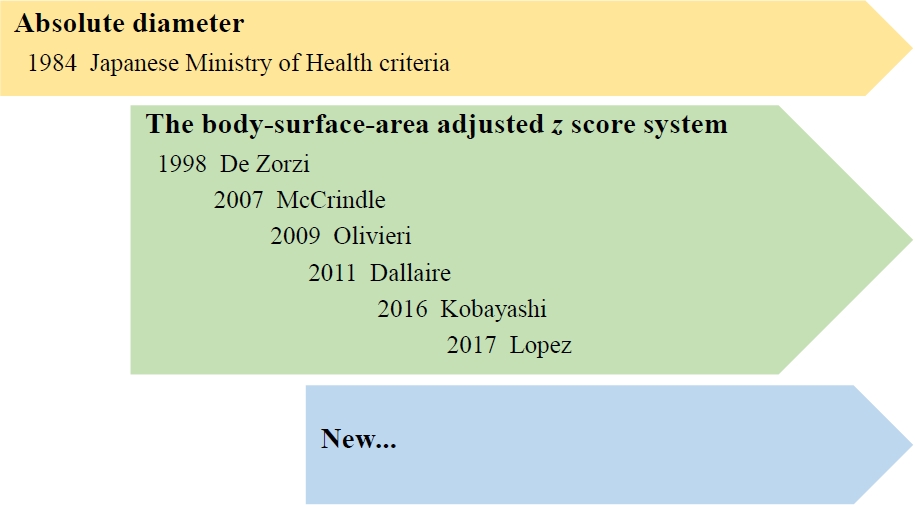
Because of the various body sizes of children with Kawasaki disease (KD), coronary artery diameter requires normalization to the body surface area as a z score.
In updated guidelines, coronary artery abnormalities are important criteria in the diagnosis of KD, and z score systems have been accepted to define coronary artery abnormalities.
However, the z score formula should be selected carefully because each yields different results.
- Neurology
- Increasing our understanding of rotavirus-induced central nervous system manifestations (14 times)
- Jon Soo Kim
- Clin Exp Pediatr. 2022;65(11):536-537. Published online May 6, 2022
-
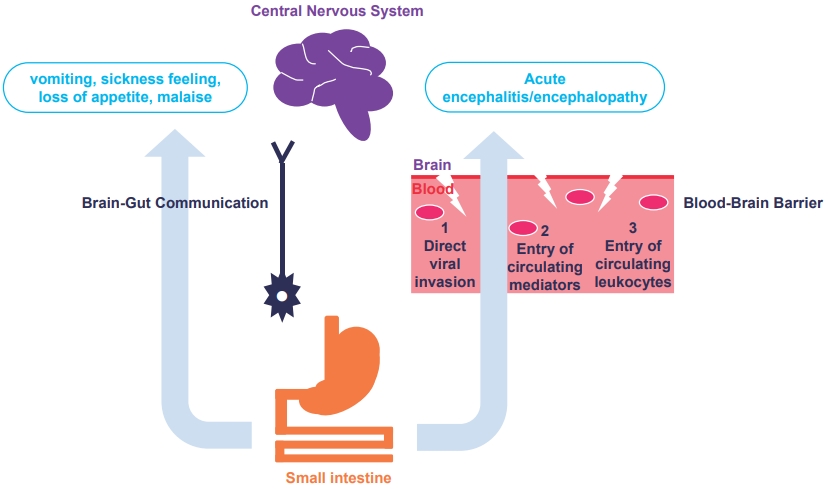
· Diverse clinicoradiological features of central nervous system (CNS) complications in rotavirus infection can be identified with the rapid and wide use of various brain magnetic resonance imaging protocols.
· An increased understanding of the various pathophysiological mechanisms of rotavirus-induced CNS manifestations will enable precise management in the future.
- Original Article
- Nutrition
- Not breastfeeding and risk of autism spectrum disorders among children: a meta-analysis (14 times)
- Ensiyeh Jenabi, Saeid Bashirian, Amir Mohammad Salehi, Salman Khazaei
- Clin Exp Pediatr. 2023;66(1):28-31. Published online July 19, 2022
-
This study aimed to determine whether there is an association between not breastfeeding (versus breastfeeding) and the risk of autism spectrum disorders (ASD) among children. We found that the risk of ASD associated with not breastfeeding had an odds ratio of 1.81 (95% confidence interval, 1.35–2.27; I2=0 %). These findings suggest the importance of breastfeeding in decreasing the risk of ASD among children.
- Clinical Note
- Genetics and Metabolism
- Biallelic POLR3A variants cause Wiedemann-Rautenstrauch syndrome with atypical brain involvement (14 times)
- Byungseung Moon, Minhye Kim, Hye Jin Kim, Jae So Cho, Hey Joon Son, Byung Chan Lim, Ki Joong Kim, Jong Hee Chae, Soo Yeon Kim
- Clin Exp Pediatr. 2023;66(3):142-144. Published online December 30, 2022
-
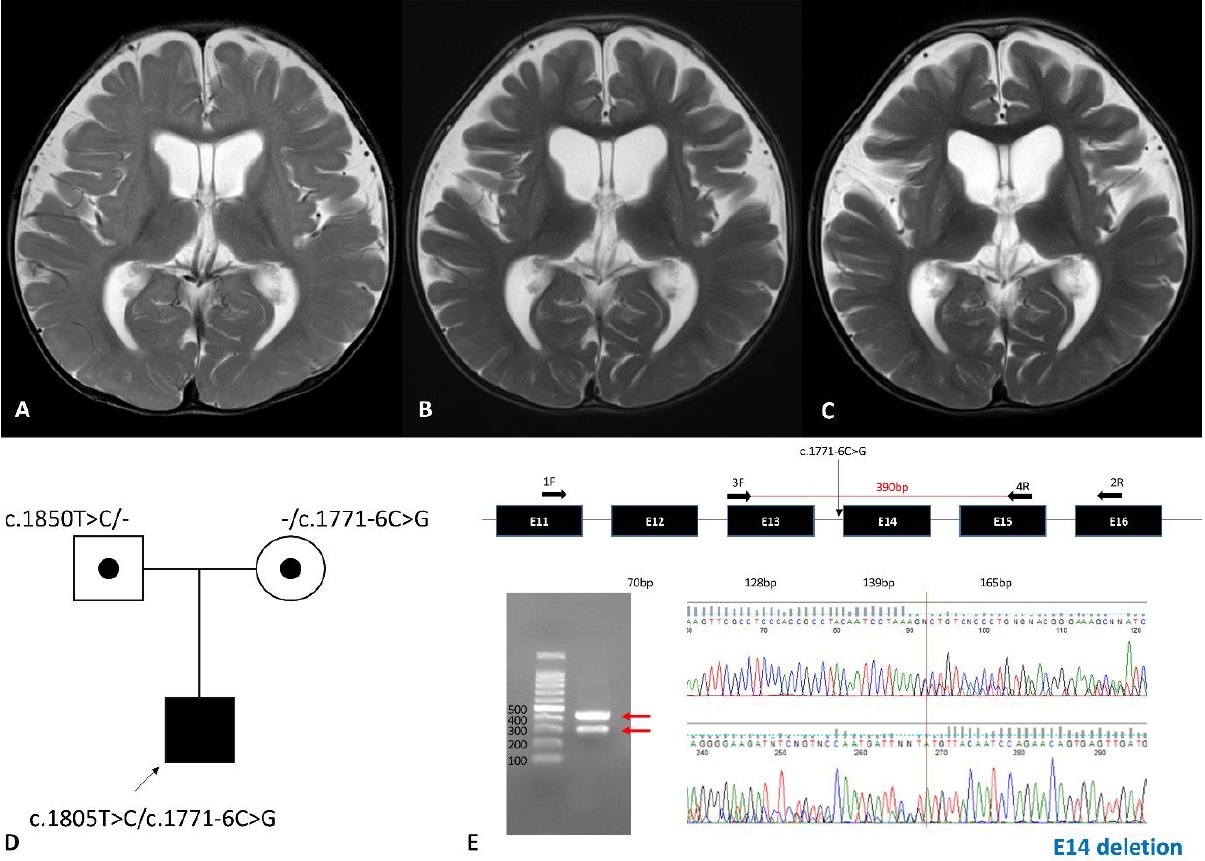
- Editorial
- Gastroenterology
- Recent advances in epigenetic mechanisms, diagnosis, and treatment of pediatric gastrointestinal allergic disorders (14 times)
- Eell Ryoo
- Clin Exp Pediatr. 2023;66(6):250-251. Published online May 19, 2023
-
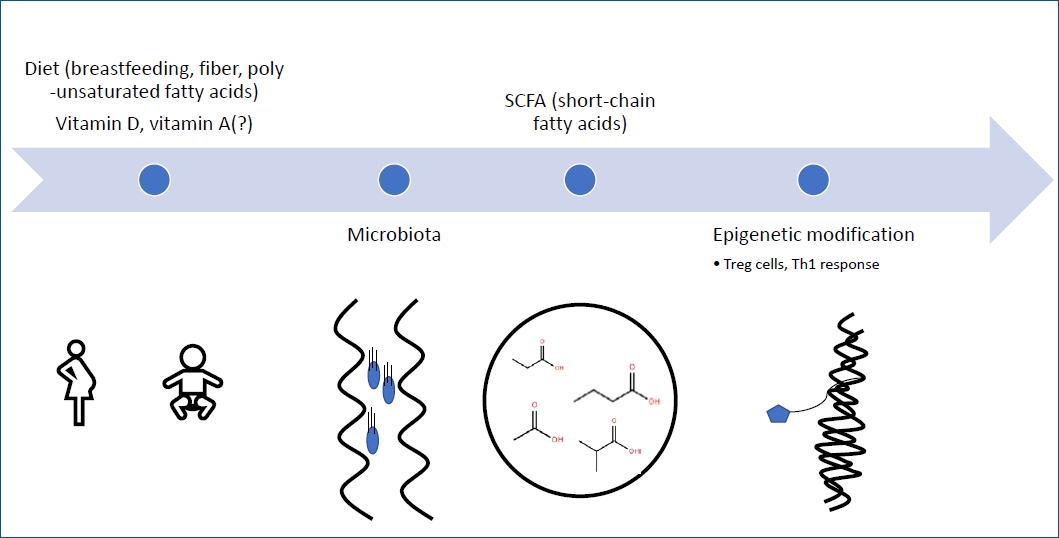
· Epigenetic mechanisms are involved in rapidly increasing food allergy.
· There is still no definitive way to diagnose food allergy.
· Early introduction of peanuts, eggs, and cow’s milk reduces food allergy incidence.
· Administration of probiotics such as Lactobacillus rhamnosus GG, Bifidobacterium bifidum can partially reduce the occurrence of allergic symptoms.
- Review Article
- Other
- Children’s health affected by parent’s behavioral characteristics: a review (14 times)
- Sung Eun Kim, Jongin Lee
- Clin Exp Pediatr. 2024;67(5):232-239. Published online August 21, 2023
-

· Parents’ occupational hazards, long working hours, and smoking behaviors should be modified adequately to minimize adverse health effects on their children.
· As of 2023, several diseases from fetal exposure to occupational hazards can be compensated with Industrial Accident Compensation Insurance in South Korea.
· A directed acyclic graph is recommended for medical research to control the effects of parents’ behaviors on children’s health.
- Neurology
- Promising candidate cerebrospinal fluid biomarkers of seizure disorder, infection, inflammation, tumor, and traumatic brain injury in pediatric patients (13 times)
- Seh Hyun Kim, Soo Ahn Chae
- Clin Exp Pediatr. 2022;65(2):56-64. Published online August 23, 2021
-
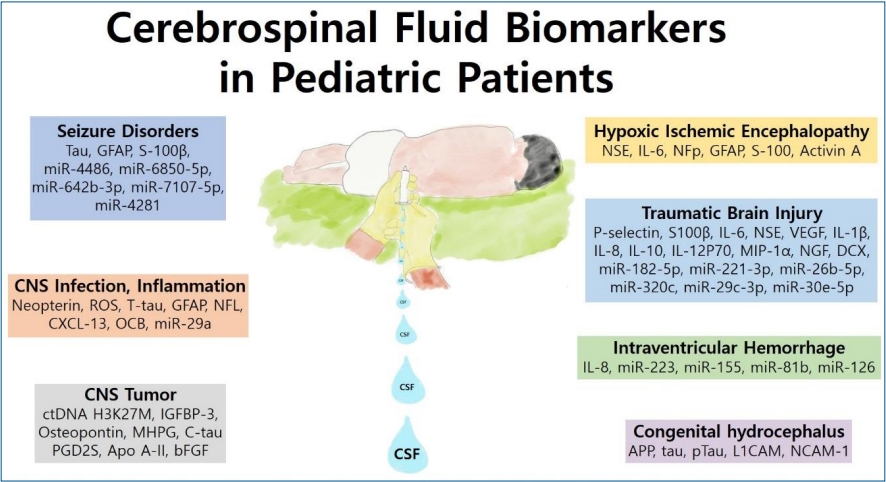
· Pediatric cerebrospinal fluid (CSF) components have been extensively evaluated as biomarkers of various neurologic diseases.
· Several promising candidate CSF biomarkers, including Tau, glial fibrillary acidic protein, neuron-specific enolase, S100β, and interleukins, have been studied in pediatric patients with seizure disorders, central nervous system infections, inflammation, tumors, hypoxic-ischemic encephalopathy, traumatic brain injuries, intraventricular hemorrhage, and congenital hydrocephalus.
· Circulating microRNAs in the CSF are a promising class of biomarkers for various neurological diseases.
- Infection
- Changes in age-specific seroprevalence of Japanese encephalitis virus and impact of Japanese encephalitis vaccine in Korea (13 times)
- Byung Ok Kwak, Young Jin Hong, Dong Hyun Kim
- Clin Exp Pediatr. 2022;65(3):108-114. Published online September 24, 2021
-
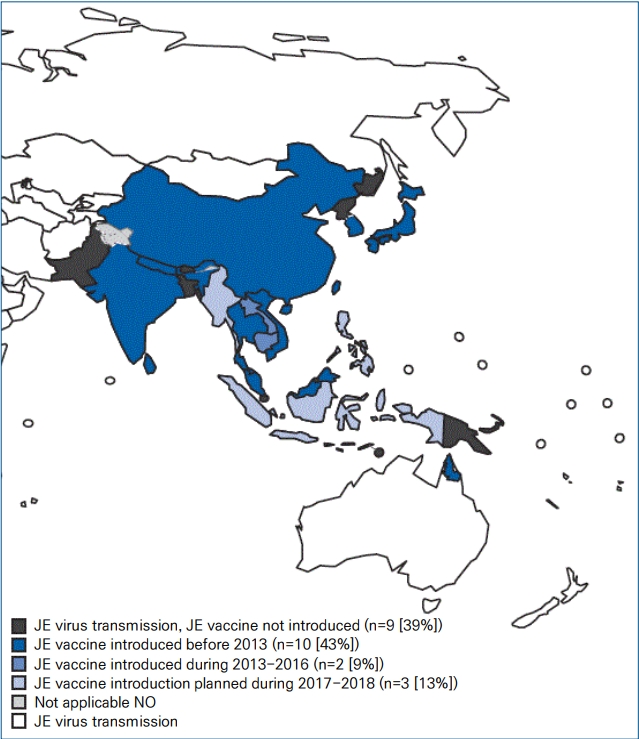
Since the introduction of a universal Japanese encephalitis (JE) vaccination program and urbanization, the incidence of JE has dramatically decreased in Korea. However, recent JE cases have occurred, predominantly among unvaccinated adults and with a shift in age distribution. Continuous surveillance of the seroprevalence of JE is required to establish a proper immunization policy in Korea.
- Four months of rifampicin monotherapy for latent tuberculosis infection in children (13 times)
- Chi Eun Oh, Dick Menzies
- Clin Exp Pediatr. 2022;65(5):214-221. Published online October 29, 2021
-
· Recently, the importance of a short-term treatment regimen including rifamycin has been highlighted in the treatment of latent tuberculosis infection (LTBI).
· Four prospective or retrospective studies in children consistently reported that a 4-month daily rifampicin regimen (4R) had a higher completion rate than and comparable safety to a nine-month daily isoniazid regimen.
· We suggest rifampicin 20–30 mg/kg/day for children aged 0–2 years and 15–20 mg/kg/day for children aged 2–10 years in 4R to treat LTBI.
- Original Article
- Oncology
- Treatment outcomes of high-dose chemotherapy plus stem cell rescue in high-risk neuroblastoma patients in Thailand (13 times)
- Kunanya Suwannaying, Piti Techavichit, Patcharee Komvilaisak, Napat Laoaroon, Nattee Narkbunnam, Kleebsabai Sanpakit, Kanhatai Chiengthong, Thirachit Chotsampancharoen, Lalita Sathitsamitphong, Chalongpon Santong, Panya Seksarn, Suradej Hongeng, Surapon Wiangnon
- Clin Exp Pediatr. 2022;65(9):453-458. Published online May 24, 2022
-

Question: This study aimed to elucidate the outcomes of high-risk neuroblastoma (HR-NB) patients treated with high-dose chemotherapy and stem cell rescue without immunotherapy.
Finding: The 5-year overall survival and event-free survival rates were 45.1% and 40.4%, respectively.
Meaning: High-dose chemotherapy plus stem cell rescue followed by cis-retinoic acid for 12 months is well tolerated and could improve survival in patients with HR-NB in limited resource settings.
- Editorial
- Pulmonology
- Community-acquired pneumonia in Korean children: time to read between the lines (13 times)
- Dong In Suh
- Clin Exp Pediatr. 2023;66(1):22-23. Published online November 10, 2022
-
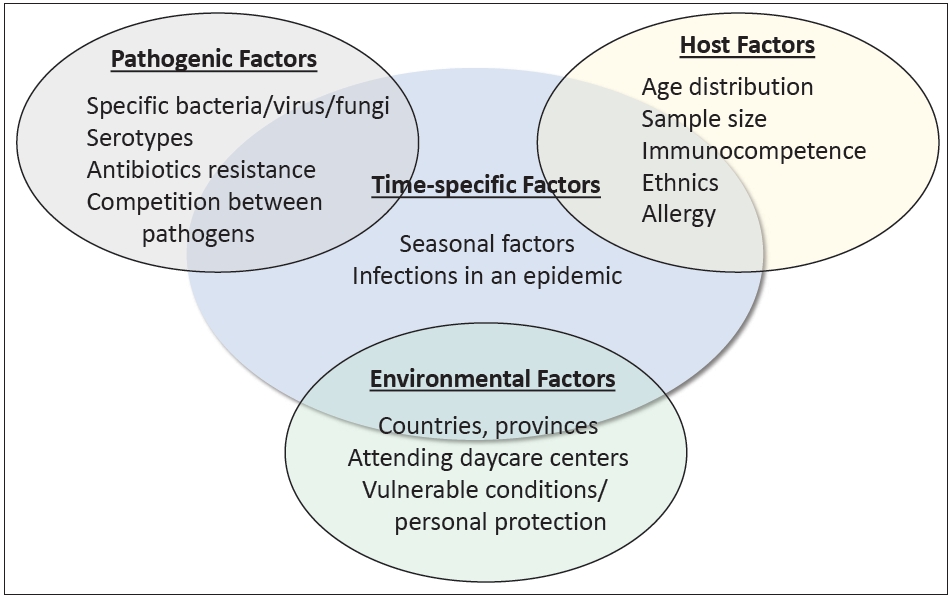
· Various studies have reported the etiology of community-acquired pneumonia (CAP) in Korean children
· Factors other than etiology are equally important to a compre hensive understanding of CAP
· Knowledge from archived reports is no longer directly applicable to the current CAP and requires careful modification
- Neonatology (Perinatology)
- Does cord blood cortisol have a mediating effect on maternal prepregnancy body mass index and birth weight? (13 times)
- Gyu Hong Shim
- Clin Exp Pediatr. 2023;66(1):24-25. Published online November 30, 2022
-
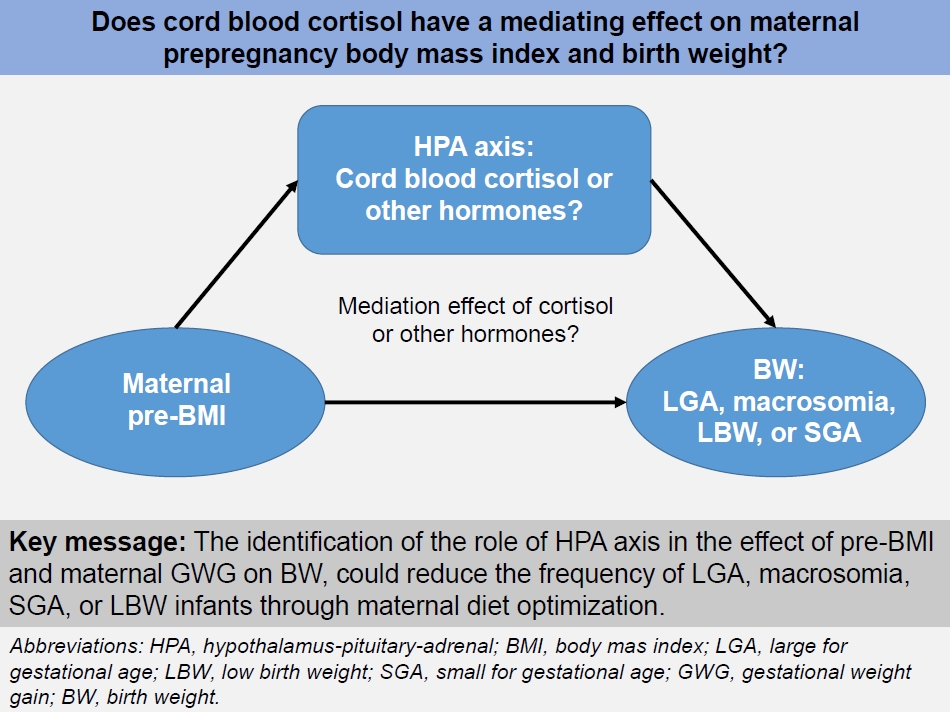
· A high prepregnancy body mass index (pre-BMI) is associated with large for gestational age (LGA) and macrosomia, whereas a low pre-BMI is associated with small for gestational age (SGA) and low birth weight (LBW).
· The identification of the role of the hypothalamus-pituitary-adrenal axis in the effect of pre-BMI and maternal gestational weight gain on birth weight could reduce the frequency of LGA, macrosomia, SGA, or LBW through maternal diet optimization.
- Letter to the Editor
- Allergy
- Increased serum eosinophilic cationic protein in children with nonspecific chronic cough (13 times)
- Young Hwan Kim, Yoon Young Jang, Jieun Jeong, Hai Lee Chung
- Clin Exp Pediatr. 2023;66(10):455-457. Published online September 14, 2023
-
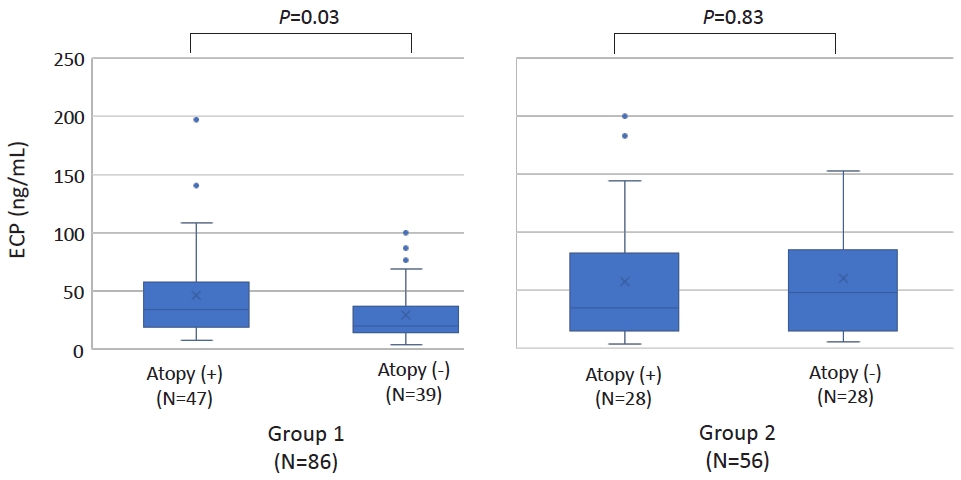
- Neonatology (Perinatology)
- Association between feeding intolerance and intestinal dysbiosis in very premature infants (13 times)
- Putri Maharani Tristanita Marsubrin, Agus Firmansyah, Rinawati Rohsiswatmo, Zakiudin Munasir, Saptawati Bardosono, Safarina G. Malik, Yuditiya Purwosunu, Ina S. Timan, Tetty Yuniati, Maya Yulindhini
- Clin Exp Pediatr. 2023;66(11):501-503. Published online October 24, 2023
-
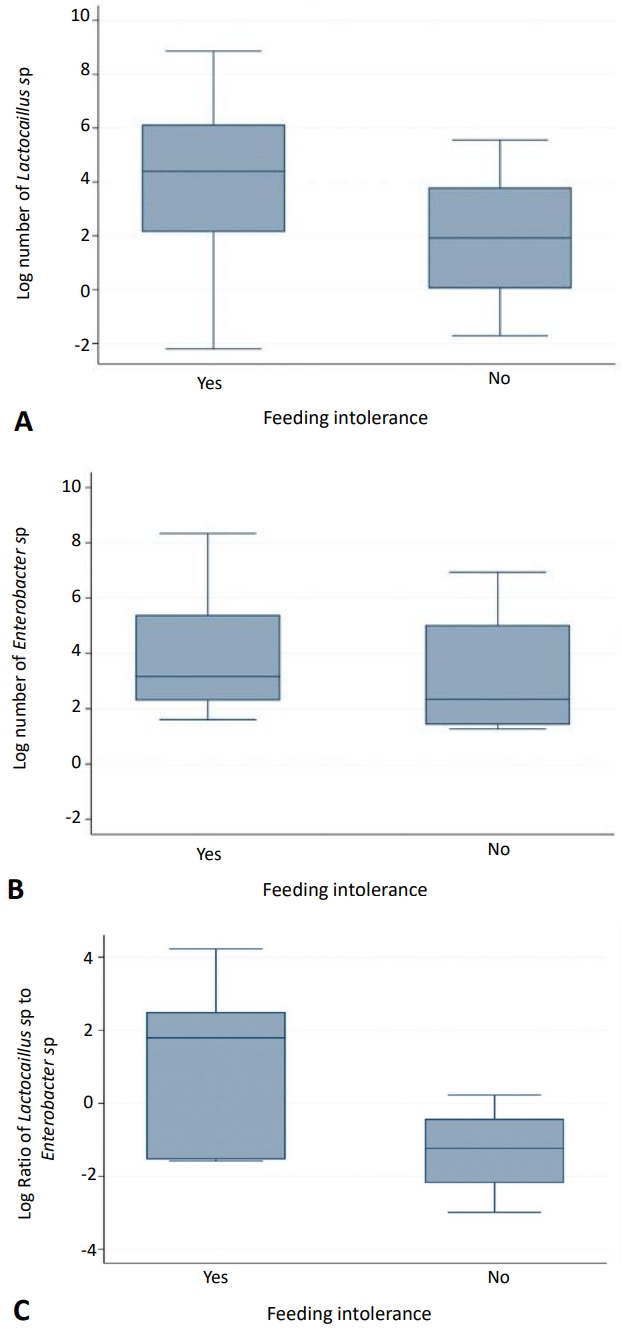
- Review Article
- Infection
- Etiological and pathophysiological enigmas of severe coronavirus disease 2019, multisystem inflammatory syndrome in children, and Kawasaki disease (12 times)
- Jung-Woo Rhim, Jin-Han Kang, Kyung-Yil Lee
- Clin Exp Pediatr. 2022;65(4):153-166. Published online November 23, 2021
-
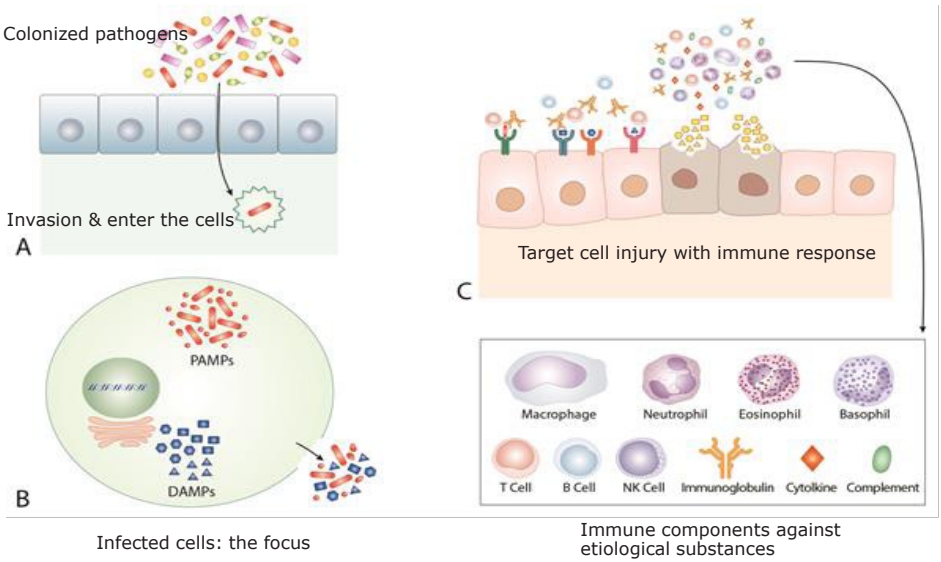
· Severe cases of coronavirus disease, Kawasaki disease (KD), and multisystem inflammatory syndrome in children (MIS-C) share similar findings: a protracted clinical course, multiorgan involvement, and similar activated biomarkers.
· Here we propose etiological agents in KD and MIS-C as species in the microbiota and introduce a common pathogenesis through the protein-homeostasis-system hypothesis.
· Early proper dose of corticosteroids and/or intravenous immunoglobulin may help to reduce morbidity and mortality in these diseases.
- Editorial
- Gastroenterology
- Noninvasive and simple, but accurate? Meta-analysis of evidence-based point-of-care ultrasound for assessing dehydration in children (12 times)
- Jin-Hee Oh
- Clin Exp Pediatr. 2023;66(11):475-476. Published online July 11, 2023
-
· Point-of-care ultrasound imaging, including measurement of the inferior vena cava/aorta ratio, is powerful for evaluating the hemodynamic status of pediatric patients.
· Owing to the limited feasibility of randomized clinical trials and insufficient data in children, imaging tools require validation.
· Objective validity meta-analyses of imaging studies can affect clinical decision-making and serve as a cornerstone for evidence-based practice in pediatrics.
- Clinical Note
- Rheumatology
- Haploinsufficiency A20 misdiagnosed as PFAPA (periodic fever, aphthous stomatitis, pharyngitis, and cervical adenitis) syndrome with Kikuchi disease (12 times)
- Kyo Jin Jo, Su Eun Park, Chong Kun Cheon, Seung Hwan Oh, Seong Heon Kim
- Clin Exp Pediatr. 2023;66(2):82-84. Published online June 22, 2022
-
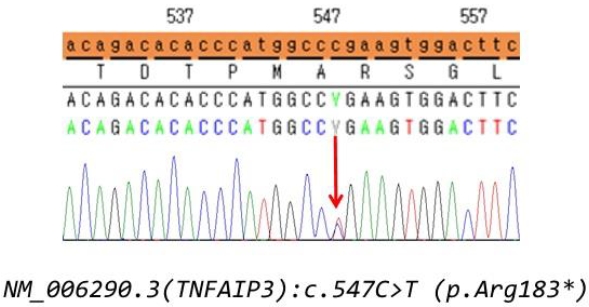
- Original Article
- Nutrition
- Survey of Korean pediatrician’s perceptions of barriers to and improvements in breastfeeding (12 times)
- Seong Phil Bae, Woo Ryoung Lee, Won-Ho Hahn, Hye-Jung Shin, Young Min Ahn, Son Moon Shin, Yong Joo Kim, Ellen Ai-Rhan Kim, Youn Jeong Shin, Dae Yong Yi, Soon Min Lee, Juyoung Lee, Jin A Lee, Sung-Hoon Chung, Euiseok Jung, Eui Kyung Choi, Ju Sun Heo
- Clin Exp Pediatr. 2022;65(11):540-546. Published online July 29, 2022
-
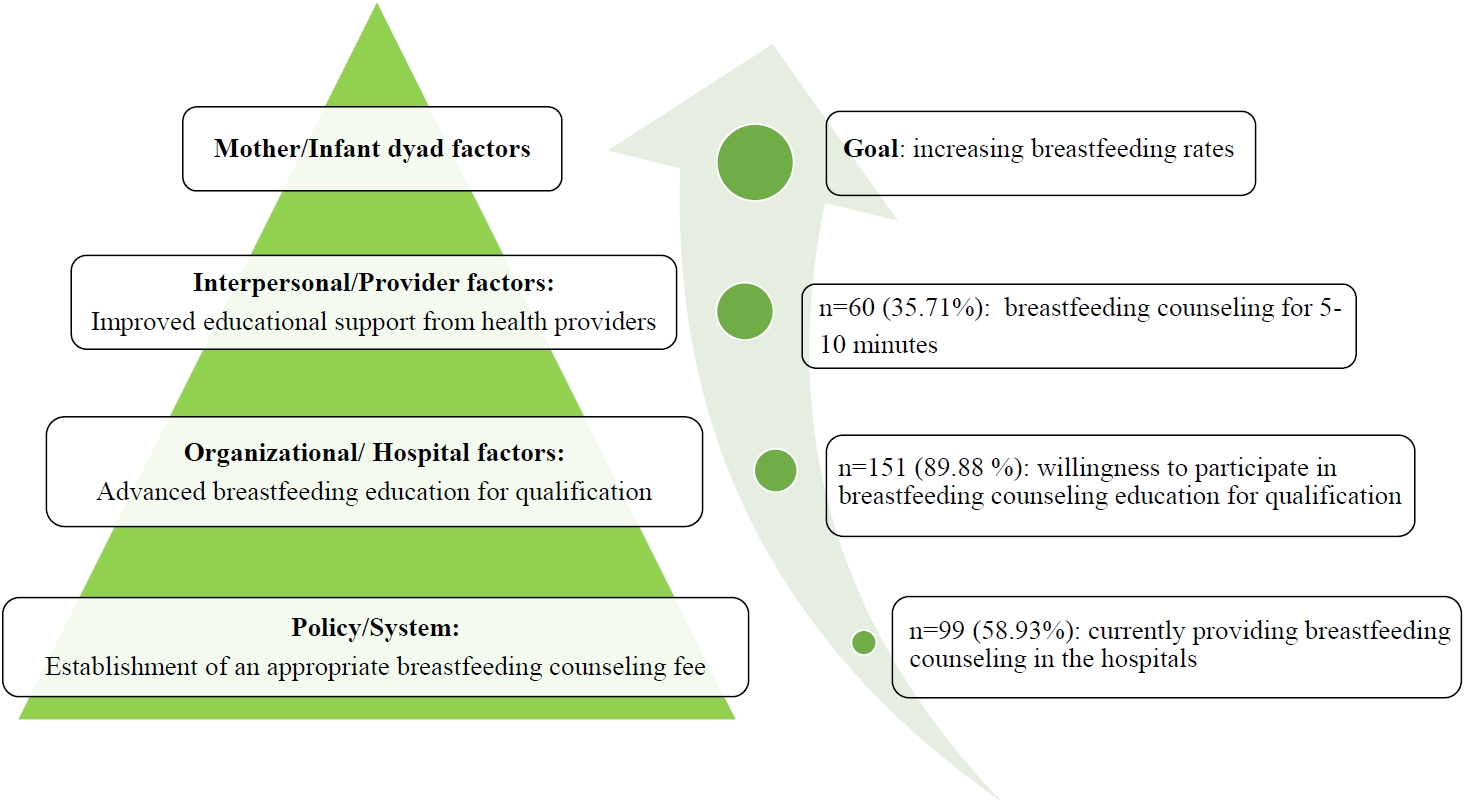
Question: What barriers to breastfeeding do Korean pediatricians perceive?
Finding: Regardless of medical institution, breastfeeding counseling for parents is currently limited, and breastfeeding is commonly discontinued due to various maternal and neonatal factors.
Meaning: To promote breastfeeding, increasing pediatrician participation in breastfeeding counseling with the establishment of appropriate breastfeeding counseling fees and the expansion of practical and high-quality breastfeeding education for medical staff should be considered.
- Editorial
- Neurology
- Lumbar puncture or not: when does febrile seizure require a neurodiagnostic evaluation? (12 times)
- Seung Soo Kim
- Clin Exp Pediatr. 2023;66(2):68-69. Published online December 9, 2022
-
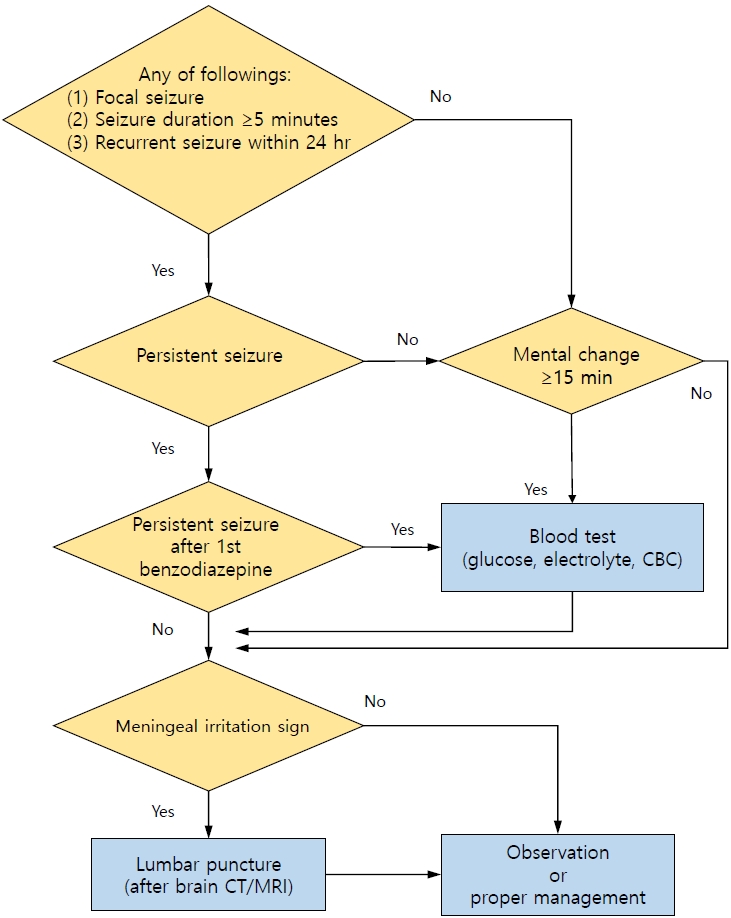
· A neurodiagnostic evaluation (lumbar puncture, blood tests, electroencephalography, and neuroimaging) is not indicated in most patients with simple febrile seizures.
· A lumbar puncture is indicated when a central nervous system infection is suspected in any patient with febrile seizures.
· Blood tests (glucose, electrolytes, and complete blood count) are indicated in patients with persistent seizure after benzodiazepine treatment, prolonged loss of consciousness, poor general condition, or signs of dehydration.
- Original Article
- Infection
- Seroprevalence of maternal peripartum human T-cell lymphotropic virus type-1 infection: a systematic review and meta-analysis of the Nigerian literature (12 times)
- Abdulrasheed Usman, Muhammad Hamis Musa, Bukhari Isah Shuaib, Olayemi Balogun, Mukhtar Adeiza
- Clin Exp Pediatr. 2023;66(7):307-316. Published online December 22, 2022
-
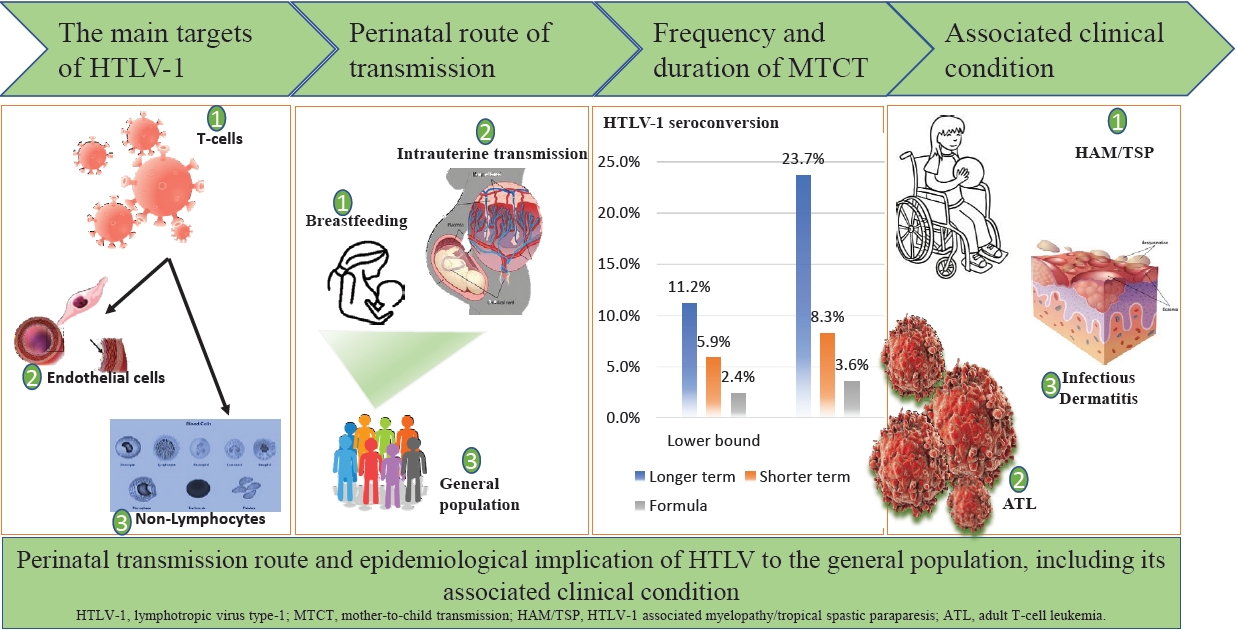
The peripartum period is an important transmission time for human T-cell lymphotropic virus-1 (HTLV-1) infection, mainly via breastfeeding and partly through the placental tissues of carrier mothers. Although most HTLV-1–infected individuals are asymptomatic, fetal and childhood infections often result in several diseases with disappointing treatment outcomes. An estimated HTLV-1 burden in Nigeria among perinatal women must be determined to enable rational planning of a comprehensive health care intervention.
- Endocrinology
- Association between polycystic ovary syndrome and risk of attention-deficit/hyperactivity disorder in offspring: a meta-analysis (11 times)
- Azam Maleki, Saeid Bashirian, Ali Reza Soltanian, Ensiyeh Jenabi, Abdollah Farhadinasab
- Clin Exp Pediatr. 2022;65(2):85-89. Published online April 15, 2021
-

Question: Have polycystic ovary syndrome (PCOS) increased risk of having an offspring with attention-deficit/hyperactivity disorder (ADHD)?
Finding: Six articles (3 cohort and 3 case-control studies; 401,413 total ADHD cases) met the study criteria. Maternal PCOS was associated with an increased risk of ADHD in the offspring based on odds ratio (OR) and relative ratio (RR) (OR, 1.42; 95% confidence interval [CI], 1.27–1.57) and (RR, 1.43; 95% CI, 1.35–1.51), respectively.
Meaning: Our study showed that maternal PCOS is a risk factor for ADHD.
-

-
-

-

-
Impact Factor4.2
-
6.52022CiteScore92nd percentilePowered by







